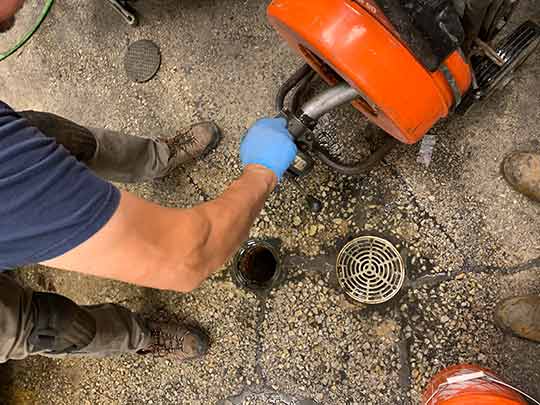
Your home’s main sewer lines transport all the wastewater from the plumbing fixtures in your home to the main sewer lines in the street, explains Keyrenter Management Austin. Sewer lines sometimes get clogged with tree roots, FOGs (fats, oils, and grease), soil, food waste, and other debris.
When this happens, one way to solve the problem is to auger the sewer line. This method is safe, low-cost, and effective for most blockages. It doesn’t take a lot of time to auger your sewer line. Although you can do it yourself, it is best to hire a plumber to perform a sewer rodding service.
How to auger a sewer line
Step one
Rent a power or motorized auger from a local tool rental shop. They typically have a 100-foot+ cable attached to a heavy-duty electric motor that feeds the cable onto the sewer line. Power augers are used for cleaning 3-inch – 4-inch sewer pipes.
Step two
Locate the main cleanout access. You can find this in the basement, bathroom, utility area, or outside, depending on the age of your house. You can identify it by the cleanout cap on top of it. Loosen the cap with a wrench. You will need plastic gloves for this job. Make sure there are no clothes around or long hair that can get into the cable guide and cause problems.
Step three
Open the cleanout access and gently insert the cable guide and cutter head into the hole. A power auger comes with various sizes of cutter heads. If your sewer line has not been cleaned in a long time or is completely blocked, you may want to start with a smaller cutter head. That will let you poke holes in whatever clogs are inside the line. You may then use the larger cutter heads to remove the clog. If you use the larger cutter heads at first, you will struggle to get the job done.
Step four
Before you power on the auger, check the switch that controls the drum rotation and direction of the cutter head. It will show three options; off, reverse, and forward. You want to make sure the switch is set forward. Check the auto-feed control for the machine. It controls the direction of the cable (whether it is going into or out of the pipe). Make sure the cable is set to go into the sewer line and not out of it.
Step five
To power on the machine, you either kneel or step on the foot switch (an air-activated switch with a large bulb used in place of an electric control to prevent electric shocks on wet floors). Before you start the machine, it is a good idea to lay rags around the cleanout and remove any objects in the area that you don’t want to get splashed with sewage.
Step six
As the cable starts to feed into the sewer line, keep an eye on the rate at which it enters the pipe. If there is a massive obstruction in the pipe, the cable may start to slow down. If this happens, slow or stop the cable completely. Let the cutter head rotate in that spot until it clears the blockage.
Step seven
Keep feeding the cable into the line until you reach the end of the service line. The length of the sewer line in most homes is around 85 – 90 feet. If you rented a power auger with a 100 feet cable, that is more than enough to go through your entire sewer line to the main sewer line in the street. When the cable reaches the end of the line, it might skip a bit or make a louder noise. Let it rotate for a while before you stop it.
Step eight
Allow the cable to run all the way out until there is no cable left on the drum. Once this happens, you may switch off the machine. Put the auto-feed control into reverse and start the motor again. This time the cable will retract from the sewer line; move in the reverse direction.
Step nine
Watch the cable as it returns. Listen for when you can hear the cutter-head spinning inside the line; this means you are almost at the end of the line. You want to turn off the machine as soon as you see tree roots or debris stuck to the cable. Gently pull the rest of the cable out of the pipe to see if you have anything caught on the cutter head.
That is how to auger your sewer line to rid clogs and blockages within the pipes. Note that you do not have to wait until you have a clog to do this. You can do this periodically as preventative maintenance for the main sewer line; as a matter of fact, it is recommended.